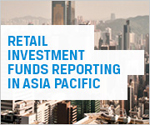Portfolio Holdings: Would More Disclosure in Mutual Funds Periodic Reporting Help?
In 2001, the Mandatory Provident Fund (MPF) scheme launched in Hong Kong with considerable fanfare as the island, which was lagging behind in its pension plan reforms and requirements in Asia, finally decided to play catch up. With much enthusiasm I joined the scheme, and the first asset allocation of my retirement money went to two funds — 60% in a growth fund and 40% in a balanced fund.
I have not changed my allocation these past 12 years; the annualised returns from inception to November 2012 were only 3.84% for the American International Assurance (AIA) MPF growth fund and 3.75% for the AIA MPF balanced fund, according to the AIA MPF half yearly report. I was not surprised that they had similar returns as I had been tracking the portfolio holdings that the MPF manager provides twice a year. Over the years I observed that the top 10 holdings of the two funds often contained similar holdings in equities. As the top 10 holdings comprise about 20% of the portfolio, I am not able to determine whether the fund was managed according to the investment style.
My experience is not unique. One of the challenges investors in retail funds and mandatory pension schemes face is tracking whether the funds have been managed according to an investment style or true to label. In a recent CFA Institute study titled Periodic Reporting for Retail Investment Funds in Asia Pacific: An Investor’s Perspective, the disclosure of fund holdings was examined in six countries: Australia, China, Hong Kong, India, Japan and Singapore. All the jurisdictions require some level of portfolio holdings disclosure except for Australia — which does not currently have a requirement for portfolio holdings to be disclosed, but plans for introducing this requirement and for public consultation are being developed.
How Far Should Disclosure Go?
Hong Kong requires full disclosure of portfolios in its annual report for retail funds. Singapore requires disclosure of the top 10 holdings and the percentage of net asset value. Disclosing the top five to 10 holdings in fact sheets and quarterly and semi-annual reports is common, and in China, disclosing the top 20 is even more common.
A second issue with disclosures lies with funds that invest in sub funds or feeder funds. This is more common with fixed-income strategies, especially high-yield bond funds. Global high-yield bond funds tend to gravitate towards U.S. high-yield bonds, which have established bond indices to track performance and a more developed high-yield bond market than Asia. With yield compressions at such low interest rates globally, fixed-income funds have gained popularity in Asia, and a number of high-yield bond funds in Asia invest in U.S. bond funds. Singapore has taken the lead by requiring the disclosures of the top 10 holdings of the sub fund if it comprises more than 30% of the bond fund. In the case of fixed-income securities, the disclosure would require more than just a name and the expiry date. The disclosure of the duration and credit rating would enhance disclosure of fixed-income securities in portfolios.
Going forward, there is a need for harmonisation of the standard in portfolio disclosures. CFA Institute study respondents called for greater disclosures of at least the top 20 holdings and those comprising between 50–75% of the portfolios. That would certainly help investors track and see whether the funds have been “true to label.”


I guess the key question is Whether a disclosure stops any mis-selling or helps investor becoming more informed vs. tons of paper. If the regular periodic disclosure helps investor to avoid any bias/take informed decisions, it will help
Excellent goods from you, man. I have take into accout your stuff previous to and you are simply too wonderful. I actually like what you have got here, really like what you’re stating and the way in which through which you are saying it. You’re making it enjoyable and you continue to take care of to stay it smart. I cant wait to learn much more from you. That is really a tremendous website.